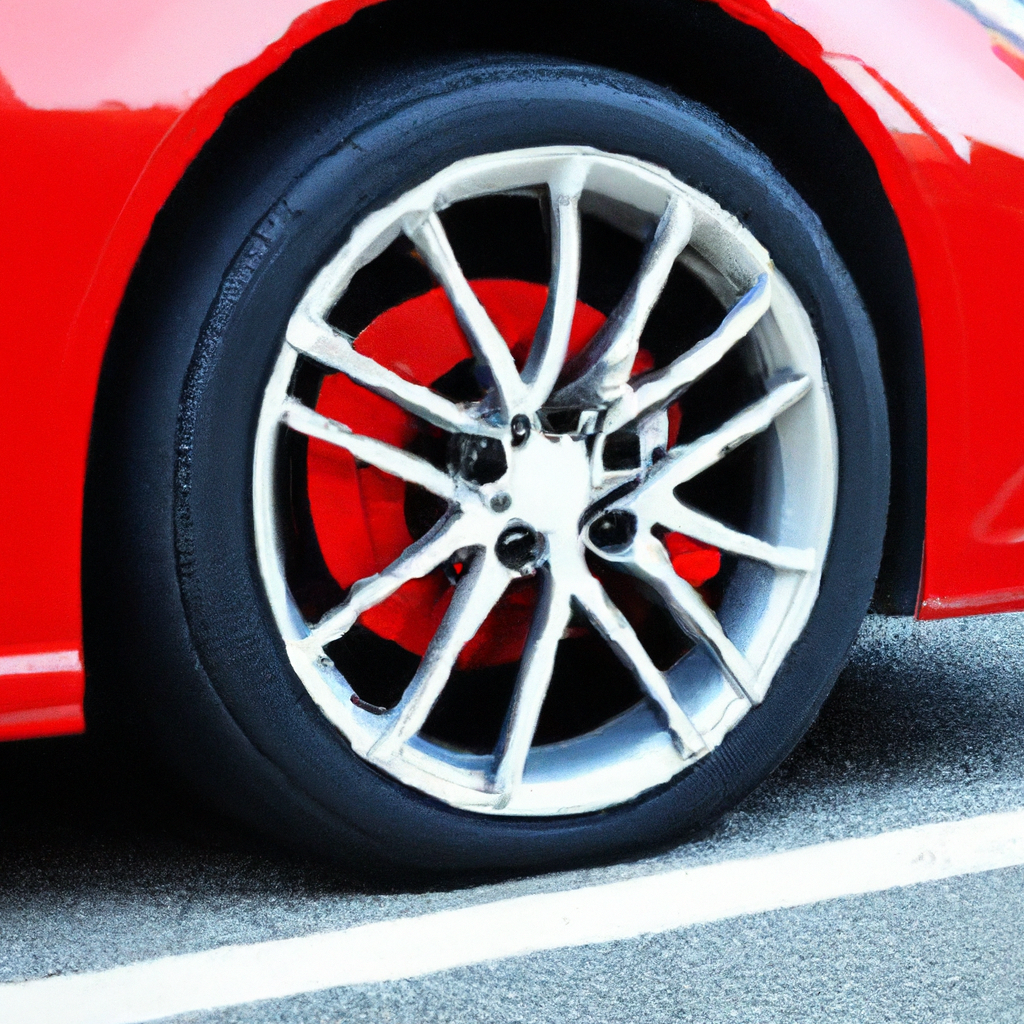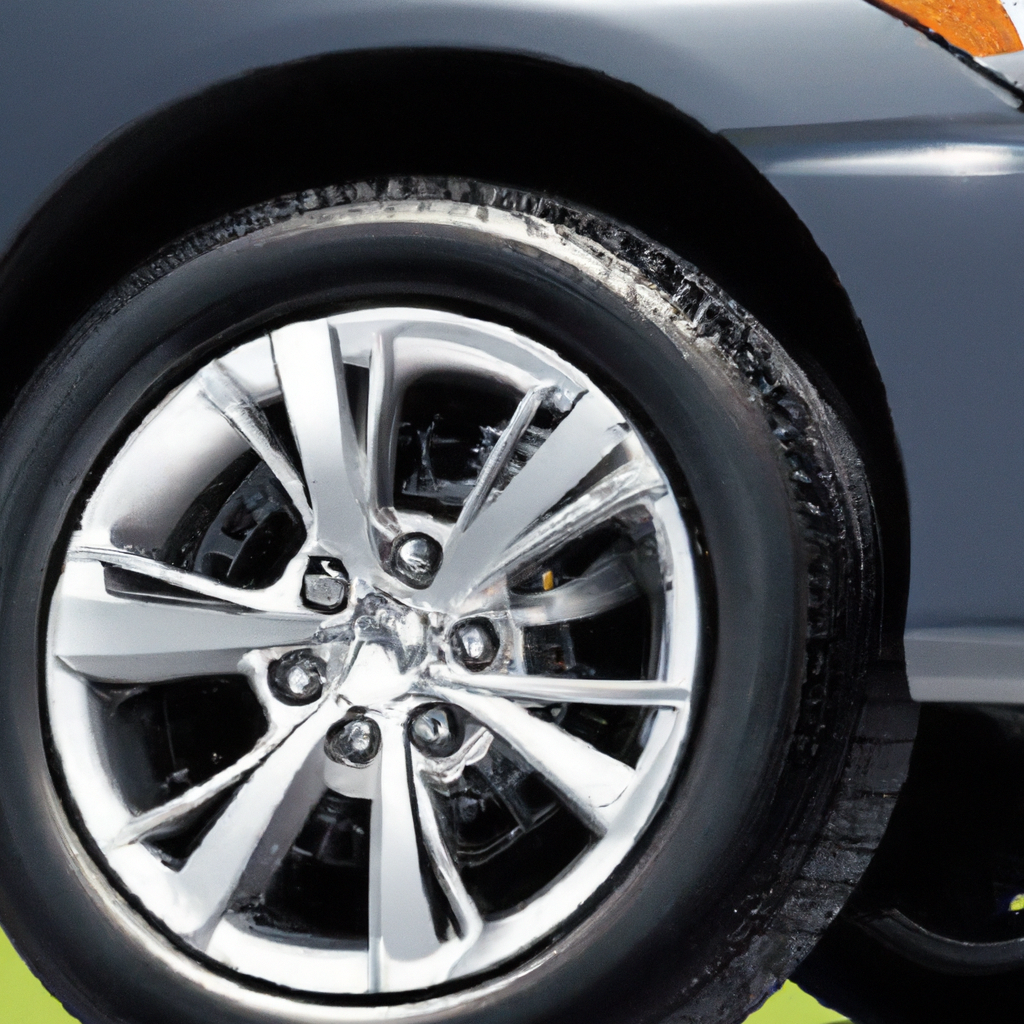Imagine cruising down the road, feeling the wind in your hair and the smoothness of the ride, when suddenly you hear a loud thud. Your tire has blown out. But wait, you remember you have run-flat tires. While they may be the hero of the day, providing continued mobility even after a puncture, you can’t help but wonder how they affect the comfort of your ride. In this article, we will explore the impact of run-flat tires on your ride comfort, highlighting the pros and cons of this innovative technology. So buckle up, as we take you on a journey of ride quality like never before.
What are run-flat tires?
Run-flat tires are a special type of tire designed to allow you to continue driving safely for a short distance after experiencing a puncture or loss of air pressure. These tires are made with reinforced sidewalls that provide support to the tire even when it is deflated. This allows you to temporarily continue driving to a repair shop or to a safer location without the need to immediately change the tire.
Design and construction of run-flat tires
Run-flat tires are constructed differently than regular tires to ensure their ability to carry the weight of the vehicle even when deflated. The sidewalls of run-flat tires are reinforced with extra layers of rubber or other durable materials, such as heat-resistant cords or inserts made of special polymers. This reinforcement helps to support the weight of the vehicle and maintain the tire’s shape and stability, even with little or no air pressure.

How run-flat tires work
When a run-flat tire experiences a loss of air pressure, the reinforced sidewalls provide support and prevent the tire from collapsing completely. This allows you to continue driving at a reduced speed for a limited distance, typically around 50 miles. The stronger sidewalls also help to maintain the tire’s stability and prevent it from detaching from the wheel. It is important to note that run-flat tires should not be driven for extended periods or at high speeds when deflated, as this can cause damage to both the tire and the vehicle.
Benefits of using run-flat tires
The use of run-flat tires offers several advantages for vehicle owners. Firstly, they provide an added level of safety by allowing you to continue driving even after a tire puncture or loss of air pressure. This can be particularly beneficial in situations where changing a tire is difficult or dangerous, such as on busy highways or in inclement weather. Secondly, run-flat tires eliminate the need to carry a spare tire and the associated tools, reducing the weight and clutter in the trunk of your vehicle. Finally, run-flat tires offer peace of mind, knowing that you have an extra layer of protection against tire-related emergencies.

Factors affecting ride comfort with run-flat tires
While run-flat tires offer certain advantages, they do come with some trade-offs in terms of ride comfort. Several factors can impact the overall comfort of your ride when using run-flat tires, including the stiffness of the sidewalls, reduced tire flexibility, tire size and aspect ratio, the influence of vehicle suspension, and the tread pattern and noise.
Stiffness of sidewalls
One of the main characteristics of run-flat tires is the increased stiffness of their sidewalls. While this stiffness is necessary to provide support when the tire is deflated, it can affect the ride comfort. Run-flat tires with reinforced sidewalls are generally stiffer than regular tires, which can lead to a harsher ride quality. The increased rigidity can result in a greater transmission of road imperfections and vibrations to the vehicle’s occupants.

Reduced tire flexibility
The reduced flexibility of run-flat tires can also impact ride comfort. Regular tires are designed with a certain degree of flexibility to absorb shocks from bumps and road irregularities. In contrast, the reinforced sidewalls of run-flat tires offer less flexibility, which can result in a more rigid and less comfortable ride. The decreased ability to absorb shocks can make the ride feel harsher, especially on rough or uneven road surfaces.
Tire size and aspect ratio
The size and aspect ratio of run-flat tires can also contribute to the overall ride comfort. Larger tire sizes, which are often used on performance or luxury vehicles, tend to have shorter sidewalls and stiffer constructions. This combination can further reduce the tire’s ability to absorb shocks and vibrations, resulting in a firmer ride. On the other hand, tires with a higher aspect ratio, which refers to the sidewall height as a percentage of the tire’s width, tend to offer a smoother and more comfortable ride due to their increased flexibility.

Influence of vehicle suspension
The suspension system of your vehicle plays a significant role in ride comfort, and it can be affected by the use of run-flat tires. Some vehicles are equipped with suspension setups that are specifically tuned to work with run-flat tires. These suspensions are designed to provide a balance between comfort and performance, taking into account the stiffer characteristics of run-flat tires. However, vehicles without specially adapted suspensions may experience a compromise in ride comfort when using run-flat tires. In such cases, the stiffer sidewalls and reduced tire flexibility can result in a more noticeable impact on the overall comfort of the ride.
Tread pattern and noise
The tread pattern of run-flat tires can also influence ride comfort. The design and arrangement of the tread blocks can affect the amount of road noise transmitted into the cabin of the vehicle. Some run-flat tires may produce more noise compared to regular tires, especially when driving on certain road surfaces. This increased noise can contribute to a less comfortable ride, particularly on long journeys or during highway driving. It is important to consider the tread pattern and noise characteristics of run-flat tires when choosing the right ones for your vehicle.

Alternatives to run-flat tires
While run-flat tires offer certain benefits, they may not be the ideal choice for every driver. Fortunately, there are alternatives available to consider.
Standard tires with spare tire option
One alternative to run-flat tires is to stick with traditional tires and carry a spare in your vehicle. This option allows you to maintain a comfortable ride while also having the peace of mind of a spare tire in case of emergencies. However, it is important to ensure that your spare tire is in good condition and properly inflated before hitting the road.
Tire pressure monitoring systems (TPMS)
Another option to enhance your safety on the road is to install a tire pressure monitoring system (TPMS). These systems constantly monitor the air pressure in your tires and provide real-time alerts if it falls below the recommended level. By keeping a close eye on your tire pressure, you can catch any issues early and take appropriate action, such as stopping to inflate a low tire or getting it repaired before further damage occurs.
Emergency tire repair kits
Emergency tire repair kits are also available as an alternative to run-flat tires. These kits usually consist of a canister of tire sealant that can be injected into a deflated tire to temporarily seal the puncture and reinflate the tire. While these kits can be a convenient solution for minor punctures, they may not be suitable for larger or more severe tire damage. It is important to carefully read and follow the instructions provided with the repair kit to ensure effective and safe use.
Benefits of run-flat tires
Despite some of the potential compromises in ride comfort, run-flat tires offer several advantages that make them a popular choice for many drivers.
Safety advantages
One of the primary benefits of run-flat tires is the added safety they provide. With run-flat tires, you have the ability to continue driving for a limited distance even after a puncture or loss of air pressure. This can be particularly crucial in situations where changing a tire would be difficult or unsafe, such as on a busy highway or in adverse weather conditions. The ability to reach a repair shop or a safer location without having to immediately stop and change the tire can greatly enhance your safety on the road.
Convenience and peace of mind
Another benefit of run-flat tires is the convenience they offer. By eliminating the need for a spare tire and the associated tools, run-flat tires free up valuable space in your vehicle’s trunk. This can be especially advantageous if you have a smaller vehicle or if trunk space is already limited. Additionally, run-flat tires provide peace of mind as they reduce the risk of being stranded due to a flat tire. Knowing that you have the ability to continue driving for a short distance after a puncture can provide a sense of security, particularly during long journeys or when traveling in remote areas.
Considerations for choosing run-flat tires
When considering run-flat tires for your vehicle, there are several factors to take into account to ensure the best fit for your needs.
Individual preferences and priorities
Your personal preferences and priorities should be a significant consideration when choosing run-flat tires. Consider what you value most in your driving experience, whether it is ride comfort, performance, or peace of mind. While run-flat tires offer safety benefits, their impact on ride comfort may vary depending on the specific tire model and other factors. It is important to assess your own priorities and select a tire that aligns with them.
Driving conditions and road hazards
The conditions in which you typically drive and the type of road hazards you encounter should also be taken into consideration. If you frequently drive on rough or poorly maintained roads, the stiffer ride of run-flat tires may be more noticeable. On the other hand, if you primarily drive on well-maintained highways or urban roads, the impact on ride comfort may be less significant. Additionally, consider the likelihood of encountering tire hazards such as sharp objects or debris on the road. Run-flat tires can provide added peace of mind in these situations, as they allow you to safely drive to a repair shop without the immediate need for a tire change.
Compatibility with vehicle make and model
Finally, it is essential to ensure that the run-flat tires you choose are compatible with your vehicle’s make and model. Different vehicles have varying suspension setups and tire size requirements. Consult your vehicle’s owner manual or speak with a professional tire technician to determine which run-flat tires are recommended for your specific vehicle. Proper fitment is crucial to ensure optimal performance and safety.
In conclusion, run-flat tires offer the convenience and safety of allowing you to continue driving for a short distance even after a tire puncture. While they may impact ride comfort to some extent due to their reinforced sidewalls and reduced flexibility, the benefits they provide often outweigh these trade-offs. When considering run-flat tires, it is important to take into account your preferences, driving conditions, and the compatibility with your vehicle. By evaluating these factors, you can make an informed decision and choose the right run-flat tires that best suit your needs and priorities.

